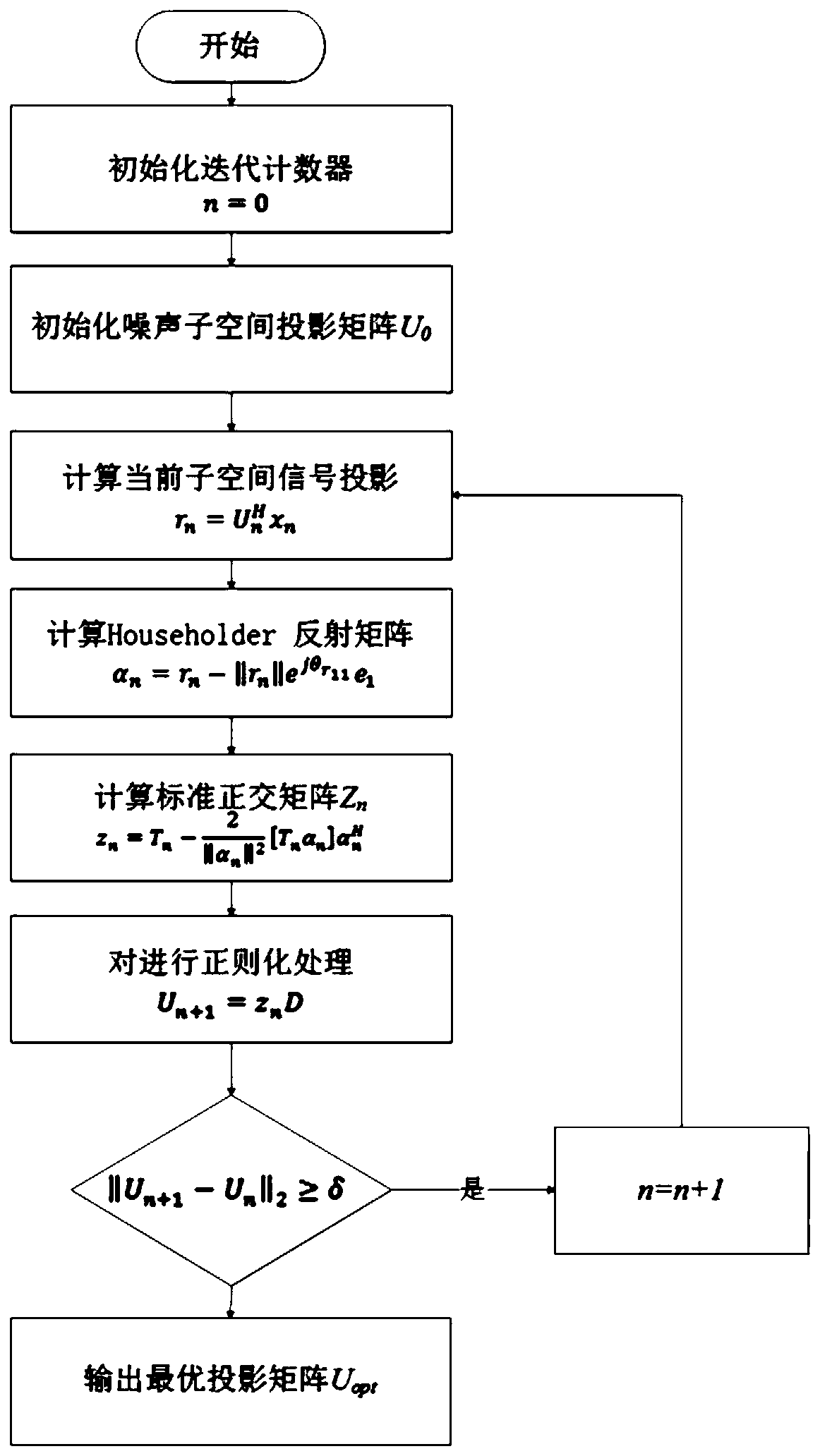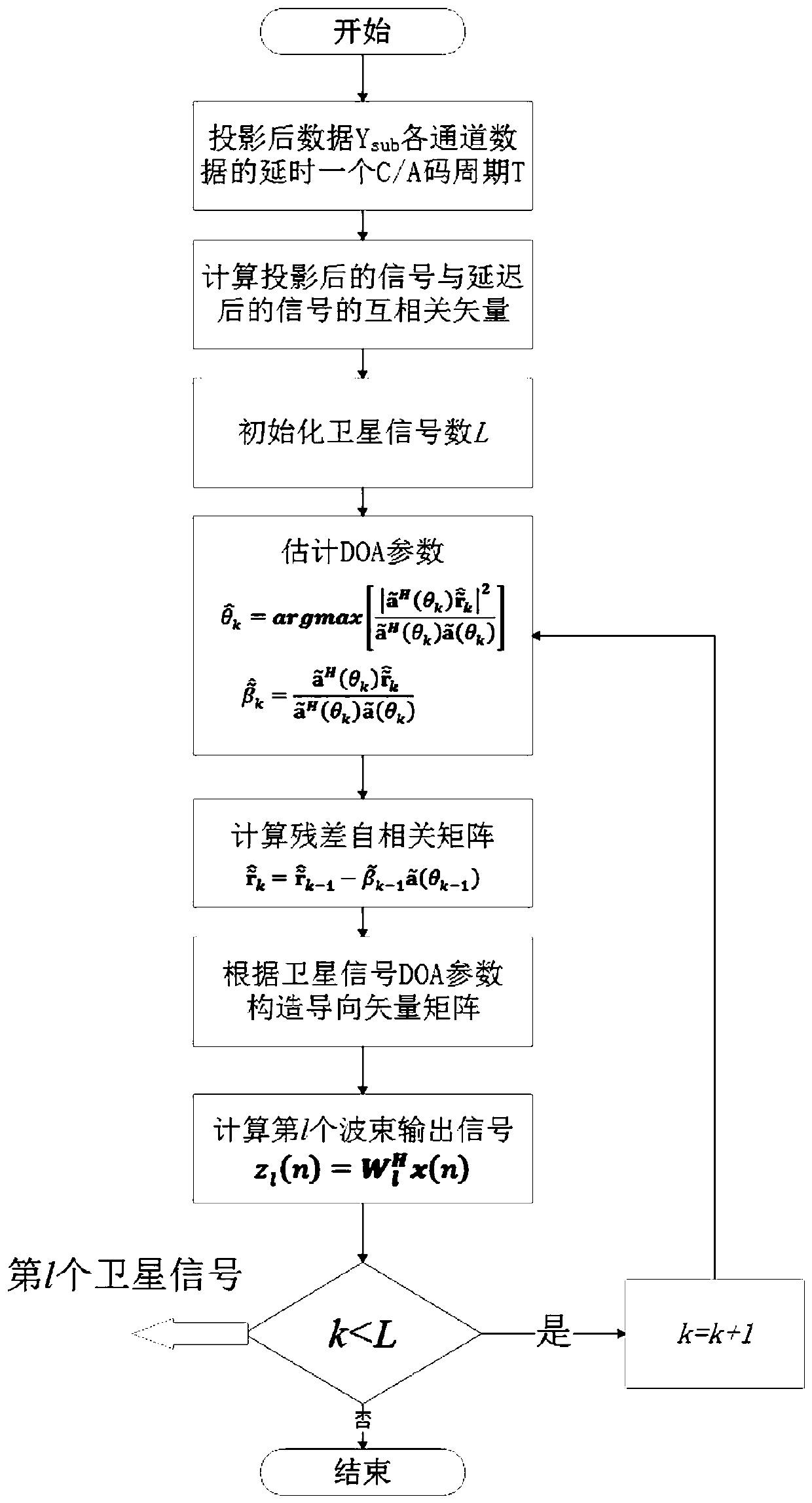GNSS receiver multi-beam pointing anti-interference method based on subspace tracking
A receiver and subspace technology, applied in the field of satellite navigation signal anti-jamming, can solve the problems of ignoring the influence of satellite signals and only focusing on the ability to suppress interference signals
- Summary
- Abstract
- Description
- Claims
- Application Information
AI Technical Summary
Problems solved by technology
Method used
Image
Examples
Embodiment Construction
[0079] The present invention will be further explained below in conjunction with the accompanying drawings and specific embodiments.
[0080] In this embodiment, the method of the present invention is applied to the GNSS system, such as figure 1 As shown, the specific steps are as follows:
[0081] S1: Let the number of antenna array elements of the satellite navigation receiver be M, M is a natural number greater than 1, and the baseband signal received by the antenna array of the satellite navigation receiver at time n is denoted as x(n), then we have
[0082]
[0083] Among them, T s is the sampling interval; L is the number of satellite signal sources; for the lth satellite, s l (n),c l and τ l (n) are their corresponding satellite effective signals, C / A codes and signal delays respectively; a(θ l ) is the steering vector of the lth satellite, θ l is its direction of arrival angle parameter; K is the number of interference sources; J k (n) is the interference sig...
PUM
 Login to View More
Login to View More Abstract
Description
Claims
Application Information
 Login to View More
Login to View More - R&D
- Intellectual Property
- Life Sciences
- Materials
- Tech Scout
- Unparalleled Data Quality
- Higher Quality Content
- 60% Fewer Hallucinations
Browse by: Latest US Patents, China's latest patents, Technical Efficacy Thesaurus, Application Domain, Technology Topic, Popular Technical Reports.
© 2025 PatSnap. All rights reserved.Legal|Privacy policy|Modern Slavery Act Transparency Statement|Sitemap|About US| Contact US: help@patsnap.com



